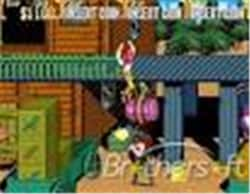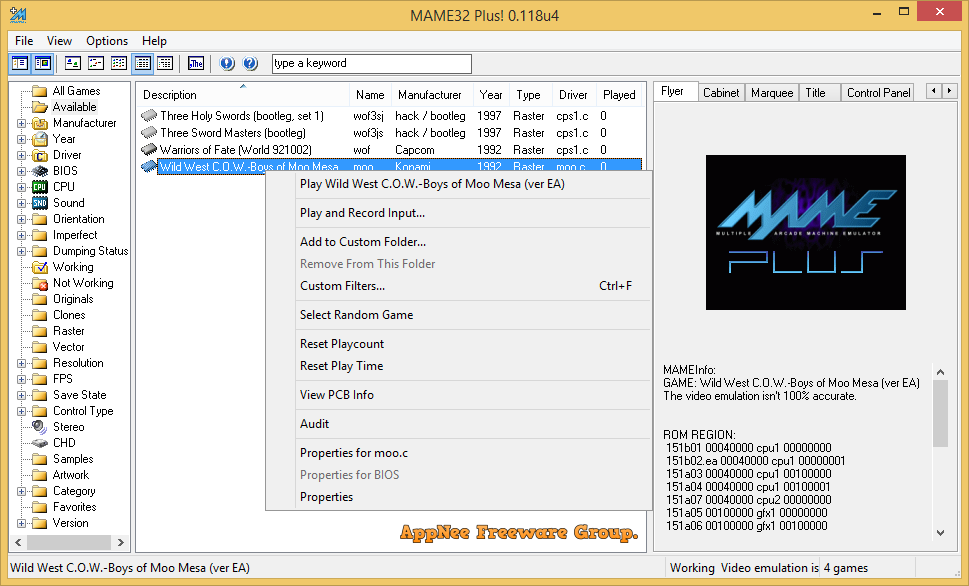
- #WHAT IS MAME EMULATOR HOW TO#
- #WHAT IS MAME EMULATOR CODE#
- #WHAT IS MAME EMULATOR MAC#
- #WHAT IS MAME EMULATOR WINDOWS#
and MESS What's New?Ī project as big as MAME certainly has had its ups and downs during the course of its existence. Most of my long-term projects, such as the conversion from C to C++ and creating more device classes, have taken on a life of their own and have been largely completed by others.MAME Project History. These days I occasionally advise the project, but generally don’t actually write much code. So in 2012 I relinquished leadership, and began to reduce my involvement in the project. There just wasn’t enough time to juggle everything.

Once my son was born in 2011, my involvement as MAME’s project leader was quickly put in jeopardy.


I soon added a PowerPC front end to the mix, and others added support for other architectures.Įventually I envisioned there to be at least anĪRM back-end, and perhaps front-ends for x86 and ARM, but it hasn’t happened yet. I wrote the initial implementation with the MIPS front-end and both
#WHAT IS MAME EMULATOR CODE#
PowerPC code in a generic way to improve performance. Intermediate representation that could be used as the interface between the front end and back end of a The PowerPC is one of the first two dynamic recompiling CPU cores in MAMEĪround the same time I introduced UML, or “unified machine language”, which was essentially an Global variables and hard-coded limitations that had existed previously. Over the course of the following years I spent much time converting various systems in MAME into C++ classes, starting with the most naturally fitting cases.Įventually many systems in MAME became devices, and in doing so we got rid of most of the In order to make C++ work, I had to create aĭelegates had existed before, but due to MAME’s architecture, our delegates needed the ability to reference an object by name and bind to them later, and so I had to craft my own classes to do so. Multiple inheritance to identify themselves as CPUs or sound generators,Īnd this allowed for a more logical method of composing systems. The first step in the process was to create the concept of a deviceĬlass, which contained all the code necessary to implement, say, a CPU or a The move to C++ was essentially my doing, though recent releases have taken it way beyond my personal comfort level
#WHAT IS MAME EMULATOR WINDOWS#
Windows machine as my main system in 2000, I applied my porting experience and created an officialĪt the time, the main version of MAME was developed for DOS, but once the Windows version was stable it quickly became the official target. UI, optimizing for new systems, and keeping up with architectural changes in the
#WHAT IS MAME EMULATOR MAC#
I even got to talk to one of the original designers about it.Īlongside all of this work emulating systems, I also spent a lot of time working on MacMAME, which was the official Mac version of MAME. It only ever ended up powering a single prototype game calledīeat Head, but investigating this piece of history was fun. RISC processor that Atari engineers had designed. One of the neatest things I got to work on was an emulator for the custom Atari ASAP CPU. With the help of Frank Palazzolo, we managed to reverse engineer the chip’s behavior and bring these games to a working state in MAME. The dreaded slapstic chip, used for copy protection during Atari’s early 16-bit eraĪnother big early challenge was the Atari “slapstic” chip, aĬopy protection device that scrambled memory on most

#WHAT IS MAME EMULATOR HOW TO#
July 1997 was when I first started working on MAMEĪlmost as soon I had found out about MAME, I joined the team and began learning how to emulate the arcade games of my youth.Īs the project grew, I began to see patterns emerge that compelled me to step up and reinvent the architecture of the system to exploit them.Įventually, I got the chance to lead the project and start a move from C to C++.Īnd then, after 15 years of intense work, I had to set it aside after the birth of my son.Īlong the way, I did also explore some other arcade emulation approaches, meet a lot of cool people at gatherings, and even give some talks.


 0 kommentar(er)
0 kommentar(er)
